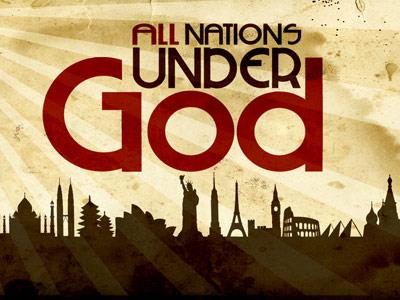-
Multi Ethnic Bereavement
Contributed by Davon Huss on Nov 28, 2017 (message contributor)
Summary: I wrote this for a counseling class. It contains three parts: 1) Bereavement in religion 2) Bereavement in ethnic groups 3) Applications for pastoral and clinical counselors.
To be used of the Lord to help those grieving is both satisfying and humbling. My personal prayer is that more mourners will be drawn to the gospel of Jesus Christ. The Gospel of Christ is the only thing that can bring true and lasting comfort. Jesus said, “Blessed are those that mourn, for they shall be comforted” (Matthew 5:4, NIV). “The Spirit of the Sovereign LORD is on me, because the LORD has anointed me to proclaim good news to the poor. He has sent me to bind up the brokenhearted, to proclaim freedom for the captives and release from darkness for the prisoners, to proclaim the year of the LORD’s favor and the day of vengeance of our God, to comfort all who mourn, and provide for those who grieve in Zion - to bestow on them a crown of beauty instead of ashes, the oil of joy instead of mourning, and a garment of praise instead of a spirit of despair” (Isaiah 61:1-3). “The mourners shall be ‘comforted.’ Even now they get beauty for ashes, the oil of joy for mourning, the garment of praise for the spirit of heaviness. Sowing in tears, they reap even here in joy. Still, all present comfort, even the best, is partial, interrupted, short-lived. But the days of our mourning shall soon be ended, and then God shall wipe away all tears from our eyes. Then, in the fullest sense, shall the mourners be ‘comforted’” (Jamieson, Fausset, & Brown, 2016).
Contrary to popular myth, the United States has never functioned as a well-stirred “melting pot,” although there has been considerable intermixture among those of originally European nationalities. There has never been a thorough melding of cultural and racial differences to create homogeneity (Irish, Lundquist & Nelsen, 1993, p. 2). The United States was established on an unconscious foundation of ethnocentric monoculturalism. “Ethnocentric monoculturalism is the individual, institutional, and cultural expression of the superiority of one group’s cultural heritage over another, combined with the possession of power to impose those standards broadly on the less powerful group” (Sue & Sue, 2013, p. 123). We, as a nation, are mainly multi-ethnic, and not yet fully multi-cultural. A multi-ethnic society is comprised of identifiable cultural groups (by race, religion, language, national origin, or other traits) that exist quite separately from and subordinate to a majority population. A multi-cultural society contains identifiable groups within it that are different from each other. However, they are able to share fully, or almost fully, in the wider culture’s opportunity structure and resources and are not depreciated by the dominate group (Irish et al., 1993, p. 2). I believe that we are more multi-cultural today than ever before, but we are still multi-ethnic in this country. Even so, this paper will use the words ethnic and culture interchangeably. This paper will focus on bereavement in our multi-ethnic, multi-cultural society.
Since I have defined a multi-ethnic society, it is time to define some important words that will be used in this paper. To be “bereaved” literally means to be torn apart. More specifically, the bereaved are sad because they are suffering the death of a loved one. They are thus, “torn apart” from them (Grace Hospice, 2016, p. 6, 9). Grief describes suffering or distress over a death. Grief can be a term that describes one’s reaction to any loss, but here we use the term grief to describe the experience of one who has lost a loved one to death (Worden, 2002, p. 10). Mourning is the term applied to the process that one goes through in adapting to the loss of a person. Mourning is the outward expression of our grief such as crying, talking about the death, praying, joining in ceremonies, and participating in support groups (Grace Hospice, 2016, p. 9). These 3 words: grief, mourning, and bereavement, will often be used interchangeably.
Sue and Sue (2013) suggest that there are 3 levels of personal identity. On the individual level, they write, “All individuals are, in some respects, like no other individuals” (p. 42). No two individuals are identical. We are all unique. This leads us to the group level. “All individuals are, in some respects, like some other individuals” (p. 43). Each of us is born into a cultural matrix of beliefs, values, rules, and social practices. Markers for this level are gender, socio-economic status, age, geographic location, ability/disability, marital status, sexual orientation, religious preferences, and race. Two of these markers are the central focus of this paper: religious preferences and race. In my opinion, there should also be a family level, bridging the gap between the individual and group levels. “In a sense, the family acts as a lens through which we view the larger culture, and it influences our specific cultural responses to any of life’s events” (Fiorelli & Jenkins, 2009, p. 29). Even so, we are dealing with religious preferences and race. Above the group level is the universal level. “All individuals are, in some respects, like all other individuals” (Sue et al., 2013, p. 44). We are all members of the human race and belong to the species Homo sapiens (Sue et al., 2013, p. 44). Everyone grieves, and although the expression of grief will vary, everyone experiences suffering and loss. The last part of this paper will deal with this level.

 Sermon Central
Sermon Central



